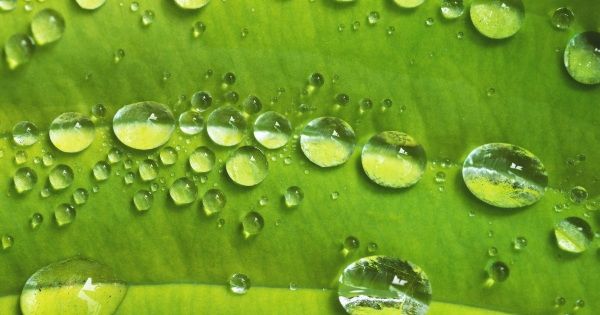One of the most valuable resources on earth is decreasing, and its depletion impacts the lives of all living beings on earth. Its shortage is costly in biological, economical and ecological terms. It is not oil, but a resource even more valuable – water.
 Green water is the water available in the soil for plants and soil microbes. Green water is what is available to our crops to grow. (Image Credit: Canva).
Green water is the water available in the soil for plants and soil microbes. Green water is what is available to our crops to grow. (Image Credit: Canva).
This year marks the 50th anniversary of the legislation of the Clean Water Act. The Soil Science Society of America’s (SSSA) Soils Matter blog (January 15th) explores how managing water concerning access and freshness is one way to enhance the utilization of this resource. These are called blue, green, and grey water.
What is Blue Water?
Blue water is found in rivers, lakes and reservoirs. It can be seen in wetlands, or it can be extracted from below surface aquifers. Available blue water is used for several purposes, including drinking water. It can be used in households and businesses – for example, manufacturers of beverages.
It is also utilized as irrigation water for agriculture. For instance, agriculture uses approximately 70% of the blue water – which is why scientists are hunting for ways to reuse water.
Precipitation, either as rainfall or snowmelt “recharges” blue water. But as more cities are built, buildings and pavement are set up, meaning this water then flows into the stormwater systems. Green roofs, permeable pavement and other solutions help trap and keep this water clean.
What is Green Water?
Green water can be defined as the water found in the soil for plants and soil microorganisms. It is the water captured by roots, used by plants and discharged back to the atmosphere through the transpiration process. Green water can also leave the soil by way of evaporation or subsurface runoff, but it is said to be productive only when it is utilized for plant transpiration.
Numerous factors establish how much water is required for a plant to grow: the amount of sun and wind, temperature and how dry the air is. These factors alter the quantity of green water a crop requires, and thus how much irrigation might be necessary besides the rainfall in an area. The overall goal is to obtain more crops per drop of water and cut the need for irrigation.
Various solutions to obtaining more from green water include minimal tillage and use of cover crops. Cover crops can provide shade for the soil and reduce water loss from the surface of the soil. Similarly, crop residue left behind on the soil when no-till practices are followed helps prevent evaporation. No-till practices and cover crops also block soil erosion and runoff by keeping soils in place and encouraging water to seep into the soil instead of drifting off the surface.
What is Grey Water?
Researchers are exploring grey water to supplement green water. The term is usually applied to water that has been formerly used and may contain some contaminations. Grey water has been used by households, cities and industries. It is the wastewater that is typically treated and discharged.
Nature makes green and blue water, while humans make as well as learn to reuse grey water.
But how much grey water is present? As it transpires, there is plenty of grey water available. It is generated by people when cleaning their vegetables, washing their hands or spraying down their driveways. Besides household wastewater, industries generate a substantial amount of grey water during their operations. A big vegetable-processing factory uses up as much water as a city with 100,000 people. In numerous areas, power generation will use as much water as irrigated agriculture.
Reusing grey water can reduce the consumption of energy – by up to 80%. Since the water has already been extracted from the ground, the extra energy that would be applied to draw out more blue water is saved. That reuse not only generates more green water for plants but also preserves blue water while delivering numerous other benefits.
Though grey water has to be treated, it does not have to be treated to a perfect level. Adequately treated water can be utilized on a field, and healthy soil will then complete the treatment by purifying it and eliminating chemicals because soil is the largest biofilter on earth. As with green water, soil quality is a crucial factor in the reuse of grey water.
Another advantage of grey water reuse is nutrient recycling. While the water is treated, it still has substantial amounts of nutrients that are required by the crops. When water is returned back to the soil, the rest of the nutrients go with it. Recycling those nutrients not only helps strengthen crop yields but also means the nutrients is kept out of surface waters and groundwater where they might otherwise influence the quality of water.
Water is a critical part of human life. Man’s food supply, among other requirements, relies on water security. Boosting the amount of green water available to crops and the efficiency with which the plants use it are essential to secure food for an increasing population. The reuse of grey water is vital too. Grey water decreases blue water usage and offers extra green water while cutting energy costs and recycling nutrients.